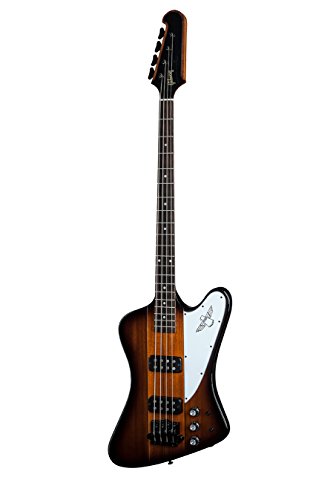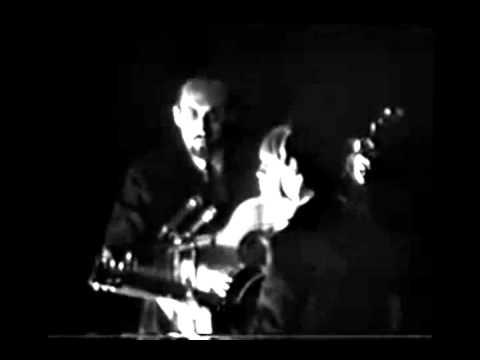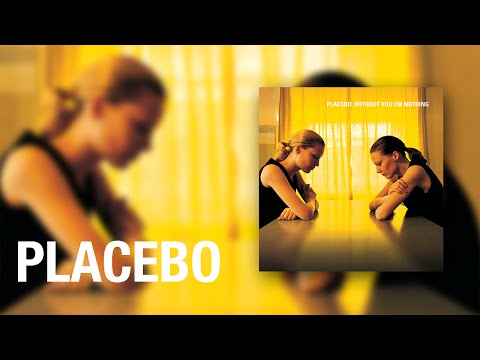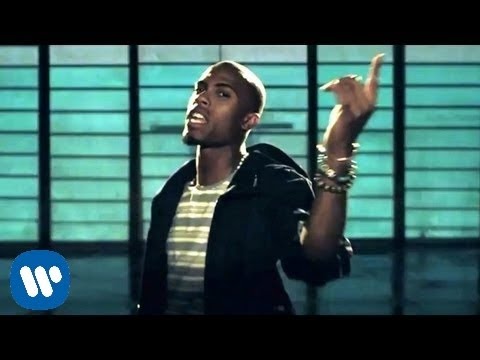While an expensive price tag doesn’t always indicate a great product in the case of bass guitars, more expensive often means a better product. Sure, there are some fantastic basses out there that are affordably priced, but they don’t compete with some of the more expensive high-end models.
So, if you’re looking to get your hands on a shiny new instrument, and aren’t too worried about the price, then you’ve come to the right place. In this article, we’ll be taking a look at some of the best high-end bass guitars on the market. Read on for more.
Best High-End Bass Guitars Reviews
Gibson Thunderbird Bass
Starting us off is the impressive Thunderbird Bass from Gibson, which is not only one of the best high-end bass guitars on the market right now, but it is also one of the coolest. It’s got an amazing shape to its body and comes in a few stunning colors that will set you apart from the crowd.
Review
Played by the likes of Nikki Sixx, Jared Followill, and the late John Entwistle, it’s safe to say that the Thunderbird has a good reputation backing up its higher price tag. One of the reasons why this instrument is widely regarded as one of the best basses is thanks to its neck and body. The neckpiece moves all the way through to the tail, with two mahogany’ wings’ added to the sides.
The result is a sustained sound that is akin to a piano, which is something that many other basses struggle to replicate. While the longer construction of 34-inches will take some time to get used to, the snap and sustain of the strings are well worth the additional effort you’ll have to put in while playing. You’ll also find two high-output, ceramic magnet-loaded humbuckers inside of the body, which work to produce a low end that is thick and rich.
The Good
There’s a lot to like about the Thunderbird, but by far, its most appealing feature is also its most obvious – it’s a beautiful instrument. The shape of the body is utterly unique, and its longer neck gives it a kind of elegance that we don’t often see on bass guitars. Many manufacturers are content to produce an instrument that looks like any other, but Gibson remains unsatisfied with mediocrity, bringing something fresh and exciting to the table with each release.
Of course, it wouldn’t be a good bass guitar if it didn’t produce a good sound, and calling the sound of the Thunderbird ‘good’ is a gross understatement. This guitar sounds amazing, and with that excellent sustain we mentioned earlier, you’ll be pumping the bass through the chests of your bandmates for hours.
The Bad
The only real gripe you might have with the Thunderbird is that its neck is a little longer than usual, which can take some time to get used to. But, once you’ve got the hang of it, you’ll never want to go back to a regular neck again.
Pros:
- Unique, beautiful shape
- Piano-like sustain
- Rich low end
- Great snap to the strings
Cons:
- Longer neck can take time to get used to
CHECK LATEST PRICE ON AMAZON.COM
Fender Precision ‘P’ Bass
Next up is the Precision bass from the iconic Fender, and it would be criminal for us not to include this fantastic instrument on our list. Often simply called the ‘P-Bass’, the Fender Precision was actually the first electric bass ever created, so needless to say, it’s got a lot of prestige behind it.
Review
This guitar was designed by Leo Fender in 1951 and quickly became the standard bass for performing musicians. It would go on to become a staple sound in music of the 50s and 60s, making an appearance on pretty much any record that featured a bass guitar. Yes, it really is that good.
Today, it is still one of the world’s most popular bass guitars and is highly sought after. There are quite a few options available these days, ranging from the Squire versions that are far more budget-friendly all the way to the eFender Custom Shop models that cost more than a pretty penny. However, in our opinion, the Fender Precision is one of the best high-end guitars on the market, and if you’ve got the finances, it’s definitely worth the price take.
The Good
While the Fender Precision bass definitely has a high price tag, it’s not unattainable by any means, though it does live firmly in the high-end range of instruments. It features Fender’s classic split-coil pickups, which have been updated to V-Mod versions for a significant upgrade. Thanks to these upgrades, the guitar is able to deliver a high output tone that will both stand out in your mix but still offer the crisp and warm tonality that we associate with vintage instruments.
The Precision bass also features the legendary ’63 neck profile, which is widely regarded as the best neck profile in the world of bass guitars.
The Bad
There’s really nothing bad to say about the Precision, as is the case with most of Fender’s offerings. If we had to nitpick, we think that the design is a little too old-school, but that’s par for the course when shopping for a vintage instrument.
Pros:
- Excellent sound
- High-end, but not unattainable
- ’63 neck profile
- Very reliable
Cons:
- Design may be too old school for some
CHECK LATEST PRICE ON AMAZON.COM
Gibson SG Standard Bass
Next we have another fantastic bass guitar from Gibson, though this time it’s the SG Standard bass. It’s a classic, hard-rocking bass guitar that is more than deserving to be on our list of the best high-end bass guitars.
Review
Played by the likes of Bill Wyman, Jack Bruce, and John Entwistle, as well as a range of other famous bass players, there are many reasons to like the SG Standard bass. And, with its reputation for being played by some of the most iconic names in the music industry, it’s clear to see why this is such a well-known and sought-after instrument.
While it is definitely on the more expensive side of life, at just over $1,000, it’s certainly not out of reach of anyone who has a little extra cash to spare or save up. If you can budget accordingly, the SG Standard Bass makes for a fantastic investment that pays dividends over the years, thanks to its wonderful sound, beautiful design, and excellent features.
The Good
One of the reasons that we love this bass so much is because it features two humbucking pickups, namely a Lead SG bass in the bridge and a Rhythm SG bass in the neck. The great thing about these features is that you can isolate or blend the pickups using the 2 volume pots.
What’s more, you’ll be able to adjust the overall tone with the help of the singular master tone pot, which makes the SG Standard a simple but effective bass guitar to play. As for the body, the mahogany construction is resonant and warm, with the classic SG body shape that makes this a very comfortable guitar to play. You’ll enjoy comfort whether you’re jamming, standing up, or sitting down.
There’s a comfortable, rounder neck profile that gives this instrument a nice finish while also ensuring that your hand doesn’t become fatigued during your longer jamming sessions.
The Bad
There’s only one problem with this guitar, and it’s that there aren’t many color options available. If you’re really looking to get something that looks unique, perhaps consider another guitar on this list.
Pros:
- Two humbucking pickups
- Overall tone can be adjusted
- Comfortable to hold
- Comfortable neck profile
Cons:
- Not many color options
CHECK LATEST PRICE ON AMAZON.COM
Fender Jazz Bass
It’s probably not at all surprising that we’re featuring another Fender bass on this list, and this time it’s the Jazz Bass. This guitar was actually the second bass guitar that Leo Fender designed, though it is just as important as its electric bass counterpart. Read on to learn more.
Review
One of the primary reasons why a significant number of players choose the Fender Jazz Bass has to do with its richer, brighter mid-range that the guitar offers. What’s more, you’ll find two different pickups on this instrument that you are able to blend or isolate depending on what you are looking for in your sound.
The Jazz Bass was fundamental in shaping the sound of the funk and disco genres, though it is also commonly used in a lot of other musical styles. This guitar is a mainstay in today’s music and is definitely one of the best basses on the market right now. The new American Professional series build’s on the Jazz’s legacy by adding V-Mod pickups and a modern slim ‘C’ shaped neck for additional comfort.
The Good
A key improvement that Fender has made to their Jazz Bass has to do with the addition of the Prosiflex graphite support rods, which run the length of the neck. These work to add stability and provide the guitar with some resistance against warping, which can sometimes occur if you store your guitar in rooms without optimal humidity or if you change your string gauges.
Another thing to love about this instrument is its appearance, which takes on the classic bass look that we all know and love while incorporating some asymmetry to give it a unique look.
The Bad
There’s one pitfall with the Jazz Bass, and it’s that it is pretty heavy. If you’re a new, young player, you’ll have some trouble holding this guitar up for extended periods, but with enough practice, you’ll build up the strength to do so.
Pros:
- Great neck dimensions
- Versatile tones
- Excellent build quality
- Stabilized neck
Cons:
- Quite heavy
CHECK LATEST PRICE ON AMAZON.COM
Rickenbacker 4003
And finally, we end off with a bass guitar not from Gibson or Fender, but from Rickenbacker. It’s the Rickenbacker 4003, an iconic instrument that has been played by world-class players from around the world, including Lemmy from Motorhead, Paul McCartney, and Geezer Butler of Black Sabbath.
Review
The Rickenbacker 4003 features two iconic single-coil pickups in the bridge and neck positions and offers a classic Rickenbacker sound that punches right through any mix, no matter how rich it might be. One of the first sonic features you’ll notice about this guitar is its louder bridge pickup.
This offers a rich back end that really lets the instrument stand out in the mix, while the neck pickups offer you the warmth and punch needed for those epic chorus runs. The pickup selector on the guitar will allow you to use them independently or blend them together for a fuller sound.
The Good
Another key feature that you can look forward to from the Rickenbacker 4003 is the dual output jacks featured on the instrument. This allows you to send the pickups to separate amps independently of one another, which in turn lets you send the clean tones of the neck pickup to your standard bass amp, while the bridge can be sent to a distorted amplifier for a massive sound.
The classic thin neck is also extremely comfortable to play, and you’ll be able to jam out for hours without your hands feeling fatigued. This is a highly addictive instrument to play, and we think you’ll have a lot of fun with it.
The Bad
The Rickenbacker 4003 is by no means a cheap instrument, and its inflated price tag puts it out of reach of anyone who doesn’t have a good chunk of change to burn. If you’re looking for something a little more affordable, we’ve mentioned some high-end guitars that are well within reach of anyone who is able to budget cleverly.
Pros:
- Highly customizable sound
- Two output jacks
- Classic thin neck
- Rich back end
Cons:
- Quite expensive
CHECK LATEST PRICE ON AMAZON.COM
A Short Guide to Buying Bass Guitars
If you still have a few questions in your mind about what you should choose when selecting a bass guitar, we are going to cover all of the considerations below.
Frets or no frets?
There are two main kinds of fretboard layouts for you to choose from when you are hunting for a bass guitar – fretted or fretless.
The fretted neck is the standard guitar neck, featuring steel frets that divide each half-step of the chromatic scale. This makes it much easier for players to find notes, especially when first starting out on the instrument.
Fretless basses will have necks that do not have these steel frets, simply having smooth wood with the strings running along the neck. These basses more closely resemble an upright bass, and while many players believe that fretless instruments provide a warmer, smoother sound, the pitch of the note that you play will be totally dependent on your finger position.
Skilled players rely on muscle memory to place their hand in the proper position, though practice will always make perfect. If you’re just starting out or are not completely familiar with a bass guitar, a fretted neck is definitely the way to go.
Active & passive pickups
Pickups also come in one of two varieties – active and passive.
Passive pickups have been around for as long as we have had the electric bass and provide a dynamic sound with a full, warm tone. The pitfall with these pickups is that you will have less control over the general tone of your instrument, which is not necessarily a bad thing, especially if you prefer a full, punchy sound.
On the other hand, active pickups are more of a recent development and are considered by modern bassists to be the superior choice. The tone that is produced by active pickups is percussive, bright, and clear. Basses with active pickups also come with an integrated battery-powered preamp, which produces a higher output than their passive counterparts.
Acoustic basses
If you want to play the bass guitar but do not want to have to worry about setting up an amplifier each time you want to play, then consider purchasing an acoustic bass. It features all of the same characteristics as an acoustic 6-string guitar, producing sound through its resonant hollow body.
The result is that you are able to play without the need for plugging into an amp, with a robust, full-bodied sound that is often appropriate for acoustic music. However, there are also many acoustic-electric bass guitars, which provide you with the hollow sound of an acoustic bass while still giving you the ability to plug your instrument in and amplify its sound for a little more volume.
How many strings?
If you find yourself asking this question, then your safest bet would be to go for the classic 4-string electric bass, which is the standard bass that you are probably already familiar with. By design, these instruments feature a far narrower neck and are tuned in the standard E-A-D-G format. This makes them a lot easier to learn and handle.
Of course, some styles of music favor 5-string basses, such as modern worship and country music, which seems to have more songs that root on B. For this reason, the B-E-A-D-G tuning of a 5-string guitar works best.
No matter what style of music you are playing, 5 and 6-string bass guitars will provide you with quite a bit more room for creativity, especially if you enjoy performing a lot of bass solos.
Bolt-on & neck through body
There is a bit of controversy surrounding which style of bass construction works best for these guitars.
Bolt-on neck designs are far more common and are a traditional method of construction where the neck is a separate piece of wood that is bolted onto the body of the bass. This offers some distinct advantages, with the most prominent being your ability to replace the neck in the event that it is damaged.
When it comes to neck-through-body bass designs, the guitar’s neck wood spans the entire length of the instrument. This provides more direct energy transfer and greater sustain. These basses are made using several pieces of wood that are glued together, with this wood usually being very high quality, increasing the overall quality of the instrument.
Frequently Asked Questions
Buying a high-end bass guitar is no small investment, so take a look at these FAQs to put your mind at ease about any questions or qualms you may still have.
What size bass guitar should I get?
The more comfortable you are playing your bass guitar, the more you are going to want to pick it up and practice, so it helps to choose a guitar that’s the right size for you! Long-scale guitars are the most commonly-used basses and measure in at 34″ in length.
There are also short-scale bass guitars, which, as you may have already guessed, are 30″ long and feature a smaller distance between their frets. These guitars are a better fit for players with smaller hands.
What tonewood should I get?
Tone is everything when playing any instrument, and the bass is no different. If you’re a beginner, then you should not be too worried about the different tonewoods that are used to make bass guitar bodies – you’ll learn about those in time.
You’ll generally find that basses are made from walnut, mahogany, maple, or basswood, with each providing the bass with different tone qualities.
How many strings should my bass have?
As we mentioned before, the number of strings on your bass guitar will influence the amount of creative freedom you have while playing. If you’re a beginner, then 4 strings are more than enough for any genre of music, but for the more advanced player, 5 or 6 strings can work well for epic bass solos and various genres.
How much does a bass guitar cost?
The price of a bass guitar can vary greatly, from costing under $150 to $1,600 and above. Be sure to keep your budget in mind when purchasing a guitar, and remember that more expensive doesn’t always mean better!
Wrapping Up
And there you have it, folks, our comprehensive guide to the best high-end bass guitars on the market right now. We sincerely hope you were able to learn something today and wish you the best with your playing.

























